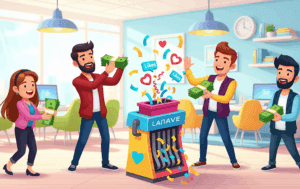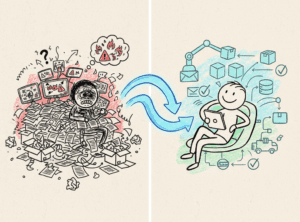Last week I tried to buy a new webcam, and the brand I ordered from gave me a poor experience. After three days with no update on whether my order had shipped (they said it would ship within two days), I reached out three times and got no answer. Each time, I received an auto-reply saying they would respond within 24 hours. They never did. In the end, I had to call my credit card company to cancel the transaction. Pretty bad.
It got me thinking about my last three decades in web and E-Commerce. Customer Experience has changed a lot. I’ve had journeys from both sides of the retail transaction. Some were inspiring. Others, like this webcam story, were painful and disappointing. At the core, the themes don’t change—customers want to feel respected, heard, and confident they’ll get what they came for.
No matter which side you’ve been on, you’ve likely seen—or been pulled into—things like:
- Promises made in marketing that operations can’t support.
- Customer service teams stuck with only part of the information.
- Shoppers who bounce between channels and feel like strangers every time.
- Frustrations between customers and customer service caused by bad policy or an untrained team.
- Policies built to stop a few bad actors that end up hurting all customers (including your most loyal).
- High acquisition costs because every transaction is treated like a one-off.
Sound familiar?
These situations frustrate customers, frustrate staff, and chip away at loyalty. Years ago, while trying to find a better way, I came across a framework called the 6 Pillars of Customer Success. Some of it seems obvious, but it’s amazing how often it’s ignored. The more I focused on these pillars—and used them in practice—the more I saw how powerful they are.
Let’s walk through the six pillars with practical steps you can use.
1. Integrity: Trust Is the Ground Floor
Without integrity, nothing else matters. Customers can forgive mistakes, but they won’t forgive dishonesty.
Here’s how integrity shows up in E-Commerce:
- Be upfront about policies. Don’t hide return or warranty conditions in fine print. Don’t hide anything. If you think someone won’t buy if you’re honest, either rethink the policy or accept you’ll lose much more when people see you as untrustworthy.
- Stand behind products. If something goes wrong, own it and fix it. Yes, a few people may take advantage, but most customers are good. You gain far more by standing behind your product than you lose to a few bad actors.
- Follow through on promises. A delivery window is a commitment, not a guess.
- Be truthful in advertising. Over-polished photos or claims that don’t match the product set up disappointment.
One company I worked with had been raising prices, then marking them down to regular price and calling it a “discount”. A consumer watchdog called them out. It hurt them badly, and they had a big hole to dig out of—tens of millions of dollars in lost sales, system upgrades, new processes, and fines. Don’t let that be you.
Takeaway: Integrity saves you from the cost of churn. Trust is cheaper to keep than to rebuild.
2. Personalization: Respect Through Recognition
Customers don’t want to feel like a stranger every time they interact with you. But many companies still treat each channel—retail, online, call centre—as separate worlds.
This siloed approach is painful. Imagine: a customer buys online, calls support, and has to explain everything from scratch because your systems don’t connect. They walk away feeling invisible.
Now compare that with a unified journey. In one apparel business I supported, we connected purchase history across retail and online. When a shopper called about denim, our call centre could say, “I see you bought this style last season—want to try the updated fit?” Customers loved it. They felt remembered and respected.
Practical steps:
- Use your CRM responsibly. Track history so you don’t ask for the same info twice.
- Make recommendations with context. Don’t just push what’s on sale—suggest what fits the customer’s journey. Use AI and recommendation tools carefully and transparently.
- Unify channels. Make sure customers aren’t “new” every time they switch touchpoints.
Takeaway: Personalization isn’t about flashy algorithms. It’s about a connected, respectful experience across every channel.
3. Resolution: Close the Loop
An unresolved case is like a leaky pipe—it only gets worse with time. Customers don’t judge you by how fast you open a ticket, but by how completely you close it.
What good resolution looks like:
- See cases through to completion. Don’t assume silence means satisfaction.
- Ask for quick feedback. A short “Did this solve your problem?” shows you care.
I’ve seen teams assume no reply meant “all good.” The truth? Customers had given up out of frustration. After we added a simple follow-up—a short automated email asking if the problem was solved after a ticket closed—resolution rates and satisfaction both improved.
Takeaway: A resolved problem can build more loyalty than a smooth transaction.
4. Expectations: Meet Them, Don’t Oversell Them
Here’s something I’ve learned many times—customers don’t need fireworks or surprise gifts at checkout. They need you to deliver what you promised. This was reinforced for me after reading “The Effortless Experience” by Matthew Dixon, Nick Toman, and Rick DeLisi.
The keys:
- Be transparent. If shipping takes 7-10 days, say it clearly.
- Don’t over-promise. It’s better to commit to a realistic timeline and meet it than to gamble on a faster one you can’t sustain.
I once failed to adjust our promised two-day delivery during Black Friday weekend. I hoped customers would be forgiving as we fell behind. Lesson learned. Operations couldn’t keep up. Customers didn’t want “fastest ever”—they wanted reliable. The next year, we staffed up and set honest timelines. Complaints dropped to nearly zero the next year.
Takeaway: Meeting expectations consistently is customer success. Exceeding them is a bonus—after the basics are solid.
5. Time and Effort: Don’t Rush Care—Show Your Work
Customers feel respected when you slow down, listen, and do real work on their issue. Speed is great for simple things. For anything serious, quality beats quick. The goal is not “fast call times.” The goal is “thorough, cared-for resolution.”
How to show time and effort without wasting it:
- Start by listening, then summarize: “Here’s what I’m hearing… Did I get that right?”
- Explain your plan and timing: “I’m going to check your order history, look at warehouse notes, and test the issue. That will take about 5-7 minutes.”
- Offer pacing options: “Would you like me to keep you on the line while I investigate, or call you back by 3 p.m. with an update?”
- Do the work—and show your work: “So far I’ve checked your last two orders, confirmed stock with the warehouse, and tested checkout. Next, I’m escalating to shipping for a scan history.”
- Own the case end-to-end: One owner stays with the customer. Hand-offs happen behind the scenes.
- Keep them in the loop: Set an update cadence (for example, within 24 hours, then daily until fixed) and stick to it—even if the update is “still working on it.”
- Don’t make people repeat themselves: Use a unified helpdesk/CRM so chat, email, phone, and social share the same context.
- Give agents time to solve: Balance SLAs with quality. Don’t punish longer handle times for complex cases. Measure thoroughness and first-contact resolution quality, not just speed.
- Equip the team: Clear knowledge bases, checklists, and escalation paths help agents investigate without guessing.
- Close with clarity: Recap what was done, what’s next, and when the customer will hear from you again.
Sample phrases agents can use:
- “I want to give this the care it deserves, so I’m going to dig in and keep you updated.”
- “Here’s what I’m doing now and why it matters…”
- “If we can’t finish this together on this call, I’ll take ownership and update you by [time].”
- “Thanks for your patience while I look into this. You shouldn’t have to repeat yourself—I’ve got your details here.”
Team and policy tweaks that support this:
- Set SLAs that commit to update frequency, not just resolution time.
- Track reopen rate, quality of notes, and “I felt heard and respected” in CSAT/VoC—not only average handle time.
- Use omnichannel tools so every rep sees full history across E-Commerce, retail, and support.
- Coach for listening and investigation skills, not just scripts.
Takeaway: Respect isn’t about rushing. It’s about careful work you can see—clear steps, steady updates, and real ownership until the job is done.
6. Empathy: Train for Humanity
Policies and scripts matter, but empathy is what customers remember. They won’t recall every word, but they’ll remember how they felt.
Build empathy into your team:
- Train beyond scripts. Teach listening, patience, and tone.
- Equip staff. Give them authority to solve problems without endless escalation.
- Lead with empathy yourself. How you treat your team shows up in how they treat customers.
I’ve seen this in boardrooms and on football fields. Teams perform best when they feel understood and supported. Customers respond the same way.
Takeaway: Empathy isn’t soft. It’s strategic. It turns one-time buyers into long-term advocates.
Pulling the Pillars Together
The six pillars are simple:
- Integrity
- Personalization
- Resolution
- Expectations
- Time and Effort
- Empathy
They might seem simple, but most teams are missing at least one. Apply them consistently and they can transform your business.
Final Thoughts
In summary, when I first found this framework years ago, it clicked immediately. Today, after using it across E-Commerce businesses—apparel, furniture, electronics, and subscriptions—I’ve seen it hold up again and again.
Here’s how to put it into action:
- Audit your customer journey. Where are you strong? Where are you weak?
- Pick one pillar to improve this quarter. Don’t try to fix everything at once.
- Celebrate wins. Progress builds momentum—for customers and for your team.
Customer success doesn’t need fancy gimmicks. It needs discipline, respect, and a real commitment to meeting customer needs. Do that, and you won’t just keep customers—you’ll earn their trust.
If you want to compare notes or talk through how these pillars could work in your business, reach out. I’m happy to share what’s worked—and where I’ve stumbled—so we can keep learning together.





